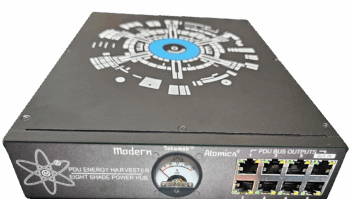Arlington, Va. — A new national study commissioned by the Consumer Electronics Association (CEA) shows that using CE to telecommute saves the equivalent of 9 to 14 billion kilowatt-hours of electricity per year — the same amount of energy used by roughly 1 million U.S. households every year, the trade association said.
The findings also indicate the estimated 3.9 million telecommuters in the United States reduced gasoline consumption by about 840 million gallons, while curbing carbon dioxide (CO2) emissions by nearly 14 million tons — the equivalent of removing 2 million vehicles from the road every year.
The study, “The Energy and Greenhouse Gas Emissions Impact of Telecommuting and e-Commerce,” was commissioned by CEA to determine energy savings and CO2 reductions that result from the nation’s increased use of electronics, such as personal computers and wireless networks.
“This report demonstrates that consumer electronics are part of a climate change solution, as the use of electronics is preventing greenhouse gas emissions and reducing fossil fuel consumption,” said Gary Shapiro, president/CEO of CEA. “Statistics have been available to detail how much energy electronics use, but less was known about the environmental benefits of consumer products developed by our industry when used to communicate and conduct business.”
“Our members’ voluntary participation in energy efficiency programs such as Energy Star are creating technological innovations and significant energy savings,” Shapiro noted. “CEA continues to support energy efficiency through voluntary approaches, research, industry-led standards and consumer-education initiatives.”
The CEA study, conducted by Tiax of Cambridge, Mass., found just one day of telecommuting saves the equivalent of up to 12 hours of an average household’s electricity use. Telecommuting also saves 1.4 gallons of gasoline and reduces CO2 emissions by 17 kilograms to 23 kilograms per day, showing the power of one individual to impact their environment in a single day by using electronics, said Shapiro.
The study focused on workers who spend one or more days working from home each week and considered the energy consumed by telecommuting compared with traditional methods.
Telecommuting reduces energy consumption associated with transportation to and from the office and, in some cases, a portion of the energy associated with commercial office space, CEA said.
Workers with a one-way commute of 22 miles who telecommute five days a week would save about 320 gallons of gasoline and reduce CO2 emissions by 4.5 tons to 6 tons per year, according to TIAX researchers. The energy savings would be equivalent to roughly 4,000 kilowatt-hours to 6,000 kilowatt-hours of electricity a year, which is comparable to the electricity consumed by an average household in four to six months.
“With power companies looking to reduce electric demand, and our nation seeking to reduce our dependence on fossil fuels, I believe there is terrific potential for the consumer electronics industry to drive emissions reductions and energy savings, if more workers telecommuted,” said Shapiro. “We urge all businesses to fully consider the potential of consumer electronics to achieve these important environmental goals.”













